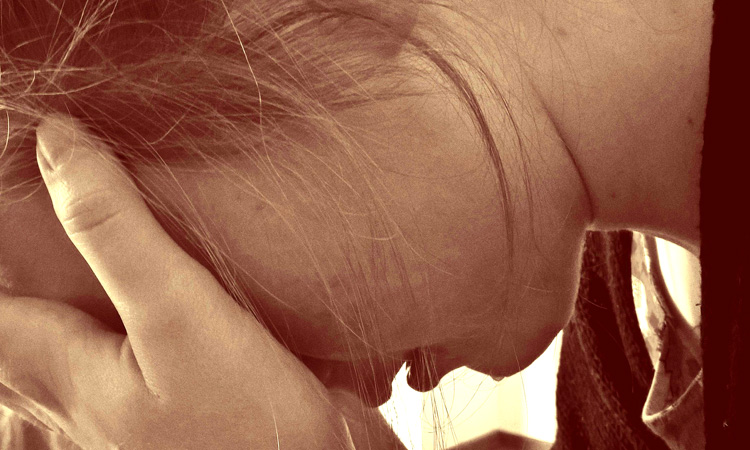For raising children, we traditionally use a system of punishment for bad behavior, although the type of punishment used tends to vary from household to household. What few realize, but is important to recognize, is the effect that such a system of punishment has on individuals at an early stage of development.
From the Child’s Point of View
Most of us forget that when we are very young, we generally regard our parents as “perfect”: they know everything, act appropriately, and do not have any faults. They are also the individuals with whom we have the closest bond: our parents are the ones from which we receive love and affection, which in turn provides us with a sense of happiness as well as self-worth.
Although as an adult, it makes sense to punish a child for misbehavior, the child lacks the perception to understand the logic behind such action. Instead, a child is forced to find a way to psychologically cope with the fact that the person(s) in his or her life who provide all his source of joy and comfort could also be the source of pain. Consequently, the only way for a child to make sense of punishment is to merge the concepts of pleasure and pain, which creates the idea that in every painful experience must be found a certain amount of pleasure.
Pain Spiked with Pleasure
As adults, we put ourselves through a lot of pain. We worry constantly, we are suspicious of other’s motives, and think that other people are the general cause of our misfortunes. What is very interesting about all of this self-torture is that in every experience of pain that we deal with, there is also an element of pleasure. Initially, this doesn’t seem like it could be true. However, logically it makes sense: if the pain we caused ourselves was only pain and no pleasure, we would immediately stop the behavior that is causing the pain.
Proving our Worth
Generally speaking, we are all equal with one another and of equal self-worth. However, many of us have been through life experiences – and have negative belief systems – that cannot accept this fact. Deep down, we think we aren’t as good as others. We feel that our past actions and our hidden shame and guilt make us unworthy. As a result, we continually try to prove to ourselves that we are in fact better than others.
This is done in many ways. If someone offends us, we get angry. Note that if we could hold in our awareness the idea that we were all equals and we all make mistakes, we wouldn’t be offended. But our need to prove self-worth leads to aggression.
When possible, we compete via our life situations: we try to get the “better” job, car, spouse, and/or house. During times when this isn’t practical, we turn inward to fantasizing.
Pleasure via Pain
Some fantasies are obvious attempts to prove self-worth, such as imagining oneself to be a hero, or winning an argument, etc. Other times, the motive is not nearly as obvious. For instance, our constant fantasizing that something bad might happen to us can be a subtle way of feeling the pleasure of attention if something bad did in fact happen. (Look at me! Look what I’m going through!)
The role of a victim is unfortunately a common way of enjoying the pleasure within the pain. For example, when a person is in an abusive relationship, it isn’t just that the person is scared to get out. Instead, it is the fact that inside that pain, there is a subtle amount of pleasure that is derived from the experience. The ego is using the experience to say “Look at me! Poor me! Why does this happen to me?”
Escaping the pattern
In order to break free from such destructive cycles, we must recognize the pleasure that we derive from our pain. At first, this may not be possible because we don’t want to recognize it. Indeed, to admit that we actually derive pleasure from our pain would defeat the entire purpose of putting ourselves through pain. So step 1 is to recognize that within every moment of pain is an element of pleasure that we have not yet recognized.
The next step is to find this pleasure. For each experience of pain, find the common patterns. What is it in one experience that is similar to another? For instance, was there a similarity in an argument you had with a coworker and an argument you had with your spouse?
Once you can pinpoint the pleasure and are aware of that pleasure that you derive from a particular pattern, you now have the power to release yourself from it. In other words, by recognizing the pleasure you get from a certain type of pain, you can then look at that small amount of pleasure and realize that you do not need it, and hence no longer need to experience the accompanying pain.
Knowing One’s Self
Looking at the bigger picture, it is important to keep in mind that the mixing of pain and pleasure was from a “misperception” at an age when there was simply no other possible explanation. But as an adult, you can now recognize that you do not need to experience pain in order to experience pleasure. On the contrary, as you continue to explore and understand yourself on deeper and deeper levels, you will build a greater appreciation for who you are. This appreciation will lead to greater self-worth, and the ability to enjoy life and enjoy greater success, without the need to compete with others.
Source:
- Eva Pierrakos. Fear No Evil: The Pathwork Method of Transforming the Lower Self. Pathwork Press. 2013.

